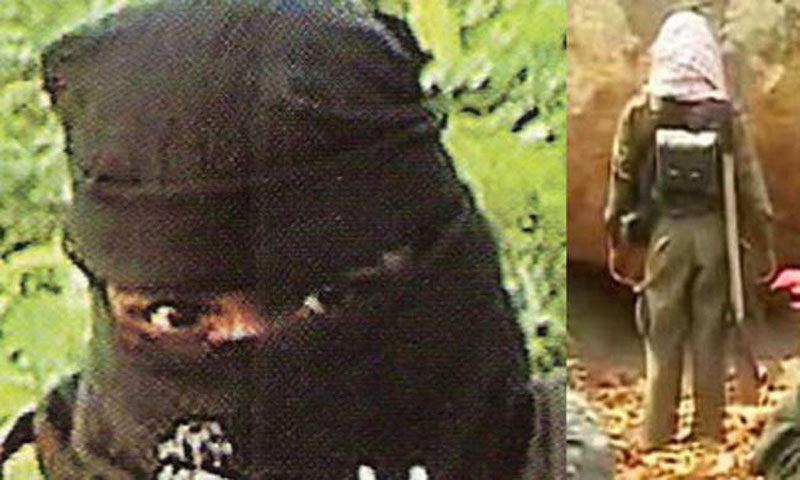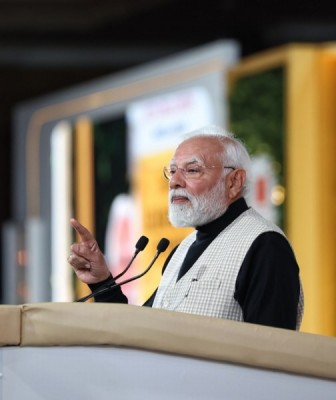 Maoist
Maoist
Maoists: Explosive Intent
On June 15, 2021, Security Forces (SFs) recovered explosives, including Improvised Explosive Device (IED) making materials, and a huge cache of arms, following an exchange of fire with Communist Party of India-Maoist (CPI-Maoist) cadres at a forest near Kulabeda village in Malkangiri District in Odisha. No casualty was reported.
On May 18, 2021, a Police head constable, identified as Kalendra Prasad Nayak, was killed and another constable received splinter injuries in an IED blast triggered by CPI-Maoist cadres in an area under the Kutru Police Station in Bijapur District, Chhattisgarh.
On April 25, 2021, CPI-Maoist cadres blew up a railway track with landmines near Lotapahar under the Chakradharpur Railway Division in West Singhbhum District, Jharkhand. Train operations in the Division on the Howrah-Mumbai main rail route was affected for a few hours, but was later restored.
On April 23, 2021, SFs launched search operations in a forest area under the Madanpur-Rampur Police limits in Kalahandi District, Odisha. After spotting the Maoists they asked them to surrender. However, the Maoists resorted to indiscriminate firing and triggered an IED blast. SFs opened fire and, in the ensuing encounter, a woman Maoist was killed.
On April 23, 2021, one Indo-Tibet Border Police (ITBP) trooper, identified as Sunil Singh, was injured in an IED blast in the Narayanpur District of Chhattisgarh.
According to partial data compiled by the South Asia Terrorism Portal (SATP), at least 19 incidents of explosions have been carried out by CPI-Maoist cadres, resulting in 18 fatalities (one civilian, 14 SFs personnel and three Maoists) and injuries to 22 persons (two civilians and 20 SF personnel), since the beginning of the current year (data till June 20, 2021). During the corresponding period of 2020, 11 such incidents were executed, resulting in 41 fatalities (17 SF personnel and 24 Maoists), and injuries to 20 SF personnel. A total of 34 incidents of explosion were carried out by CPI-Maoist cadres, resulting in 46 fatalities (two civilians, 18 SF personnel and 26 Maoists), and injuries to 48 persons (five civilians and 43 SF personnel) through 2020.
Since March 6, 2000, when SATP started documenting data on Left Wing Extremist (LWE)-linked violence, a total of 1,490 incidents of explosion have been carried out by LWEs, resulting in 1,840 fatalities (510 civilians, 1,172 SF personnel, 118 Maoists and 40 deaths which remained unspecified) and injuries to 2,205 persons (694 civilians, 1,318 SF personnel, 136 Maoists and 57 injuries which remained unspecified). At peak, 187 incidents of explosion were carried out by the LWEs were recorded in 2009, resulting in 182 fatalities (36 civilians, 128 SF personnel and 18 Maoists) and injuries to 301 persons (64 civilians, 145 SF personnel, 81 Maoists and 11 unspecified). However, in terms of fatalities, 2010 was the worst year, recording 388 fatalities (200 civilians, 177 SF personnel, two Maoists and nine unspecified) and another 295 injuries (208 civilians, 71 SF personnel, one Maoist and 15 unspecified), in 149 incidents of explosion. The worst ever IED attack targeting SFs, was on April 6, 2010, when the Maoists first blew up an SF anti-landmine vehicle, and then fired indiscriminately, killing at least 75 Central Reserve Police Force (CRPF) personnel and a State Police trooper in an ambush at Chintalnar’s Tarmetla village, near the thick Mukrana Forests in the Dantewada District of Chhattisgarh.
The maximum number of incidents of IED explosions have been reported from Chhattisgarh, 395 incidents (684 fatalities and 647 injured); followed by Jharkhand, 329 incidents (363 fatalities and 502 injured); Andhra Pradesh, 237 incidents (162 fatalities and 262 injured); Bihar, 228 incidents (186 fatalities and 248 injured); Odisha, 179 incidents (123 fatalities and 163 injured); West Bengal, 64 incidents (222 fatalities and 268 injured); Maharashtra, 44 incidents (90 fatalities and 110 injured); Telangana, seven incidents (four injured); and two each from Uttar Pradesh (three fatalities and one injured), Karnataka (six fatalities), and Kerala (one fatality). One incident was reported from Madhya Pradesh.
The Maoists often use IEDs to administer a first shock before engaging SFs on patrol in gun battels during ambushes. The use of IEDs also helps them avoid direct confrontation on ground. They use IEDs hidden underground or in bushes, on national highways, important State roads and near SF camps. These are often very difficult to locate, and inflict higher casualties without suffering any loss of their own cadres.
A March 5, 2021, report, quoted an unnamed officer in the Jharkhand Police, stating,
They (Maoists) are now avoiding battles or confrontations. IEDs, especially pressure bombs, do not need direct contact. So, this helps them to implement their new strategy (use of pressure bombs).
Dantewada (Chhattisgarh) Superintendent of Police (SP), Abhishek Pallav, disclosed,
Pressure bombs are not a new addition to the arsenal of CPI (Maoist) but their usage is part of a new strategy. The pressure bombs earlier used one or two kgs of explosives, now 7-8 kg is being used. The intention is to kill and not just deter forces from going inside Maoist strongholds.
Earlier, a February 2017 report, prepared by the National Bomb Data Centre (NBDC) of the National Security Guards (NSG) assessed,
High explosives (IEDs) are the most preferred form of explosives used by the Maoists/insurgents/extremists to inflict heavy casualties on the targeted people/security forces or properties.
Meanwhile, a February 26, 2021, report, revealed that the Maoists in Chhattisgarh and Odisha “get hold of explosives through the owners of stone crusher plants in Chhattisgarh and Odisha borders." Since they do not have explosives’ dealers in their States, stone crusher owners in Chhattisgarh and Odisha purchase the same from Andhra Pradesh and Telangana as the Maoists threaten gullible stone crusher owners into purchasing huge loads of explosives. Later, the Maoists forcibly take the loads away from them without even paying a single penny.
Significantly, the current Maoist ‘chief’ Nambala Keshava Rao aka Basavaraj (65) is an expert in explosives and military techniques. Consequently, it was widely believed that the use of IEDs may increase. However, the emerging reality is that IED incidents have declined in the two years, seven months, 16-days period, since November 5, 2018, when Basavaraj became the ‘chief’. At least 109 incidents of IED explosion by the Maoists have been reported in this period, resulting in, at least 104 fatalities (17 civilians, 56 SF personnel and 31 Maoists) and 147 injured (30 civilians and 117 SF personnel). During the two years, seven months, 16-days preceding November 5, 2018, at least 155 incidents of IED explosion by the Maoists were recorded, which resulted in at least 99 fatalities (11 civilians, 79 SF personnel, and nine Maoists) and 185 injured (21 civilian, 160 SF personnel, one Maoist, and three unspecified). It is useful to note, however, the rising efficiency of the attacks, with a significantly lower number of incidents inflicting higher fatalities in the Basavaraj period.
Thus, when analysed in the context of the overall depleting capabilities of the Maoists, the data does suggest that, under Basavaraj, the Maoists have managed to use IEDs as an increasingly potent tool against SFs and civilians.
The Maoists are gradually and certainly failing across the country, yet their efforts to regain their erstwhile areas of influence have not ended. The increasingly effective use of IEDs was clearly anticipated. Both the Union and State Governments must, therefore, implement a strict policy to check the easy access to and acquisition of explosive materials, to check the rebels, even as SFs evolve effective protocols to minimize the impact of these devices.
Support Our Journalism
We cannot do without you.. your contribution supports unbiased journalism
IBNS is not driven by any ism- not wokeism, not racism, not skewed secularism, not hyper right-wing or left liberal ideals, nor by any hardline religious beliefs or hyper nationalism. We want to serve you good old objective news, as they are. We do not judge or preach. We let people decide for themselves. We only try to present factual and well-sourced news.







